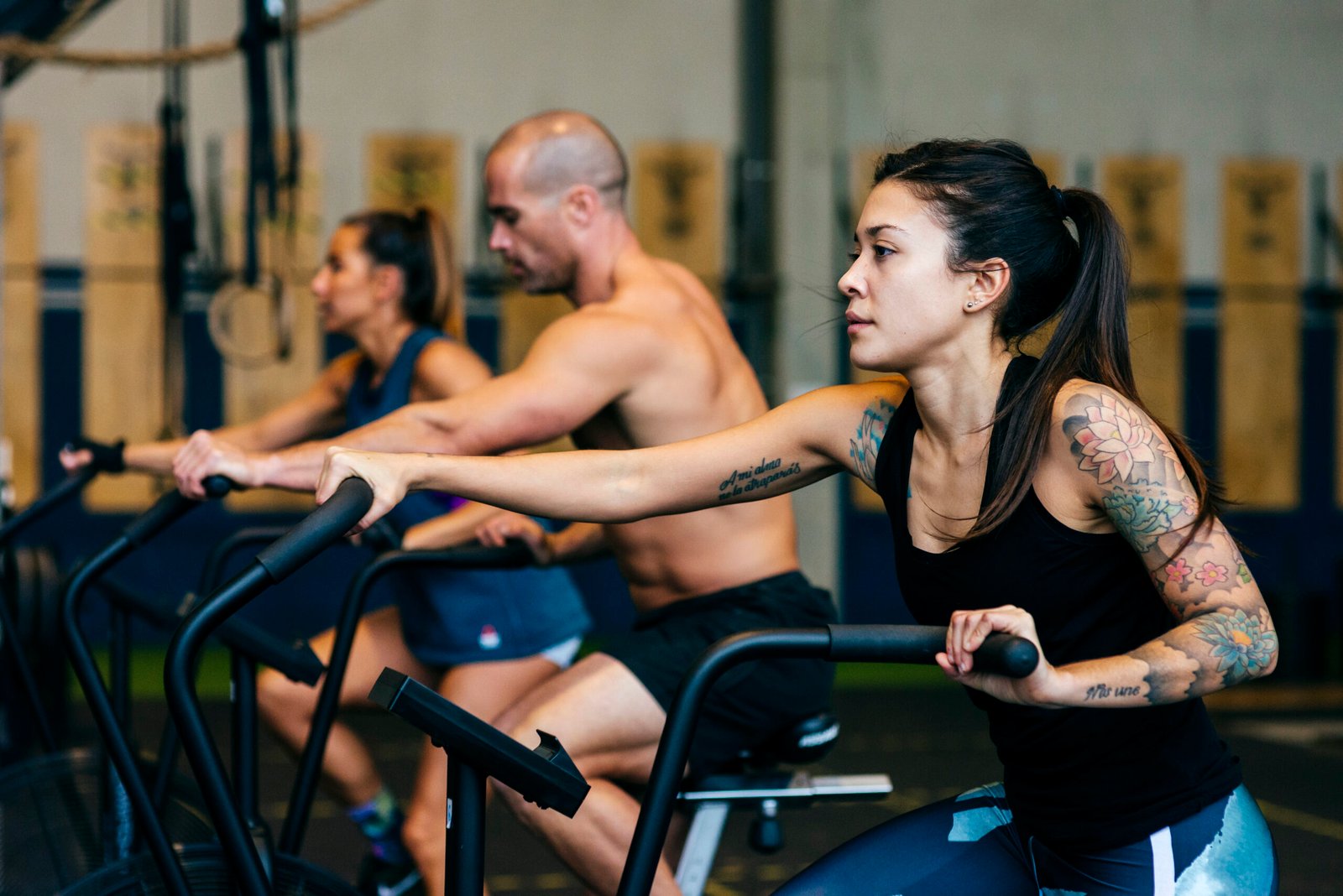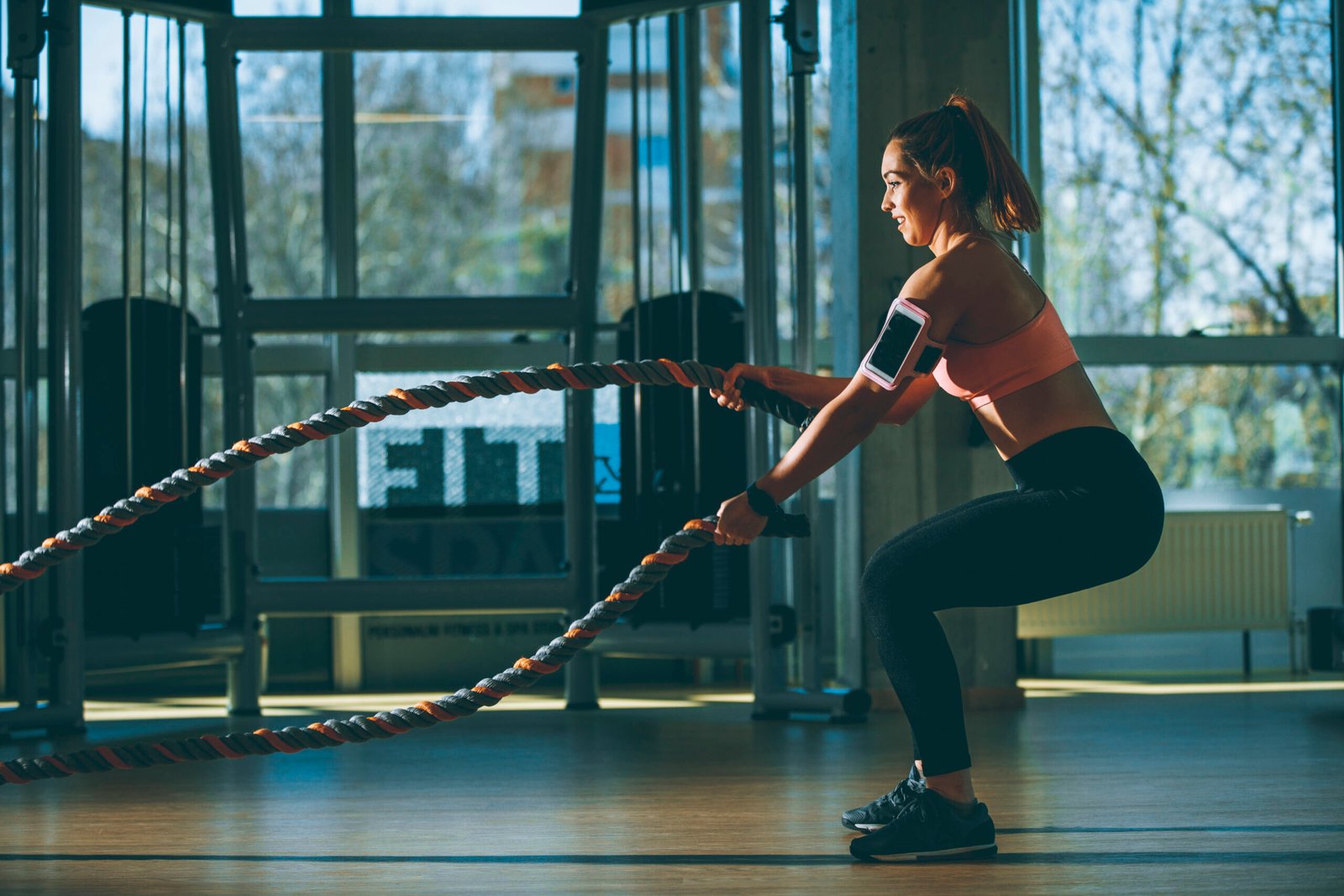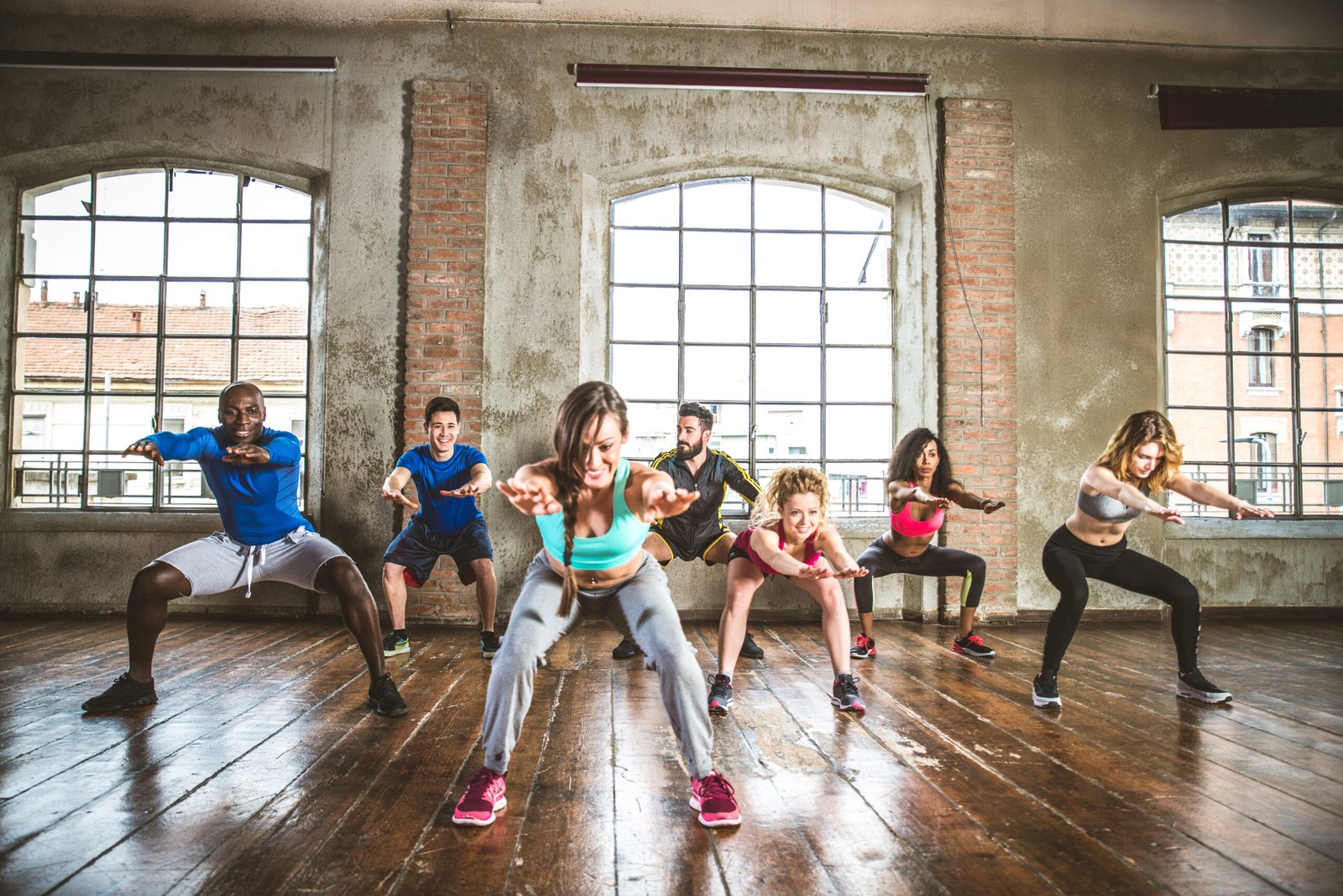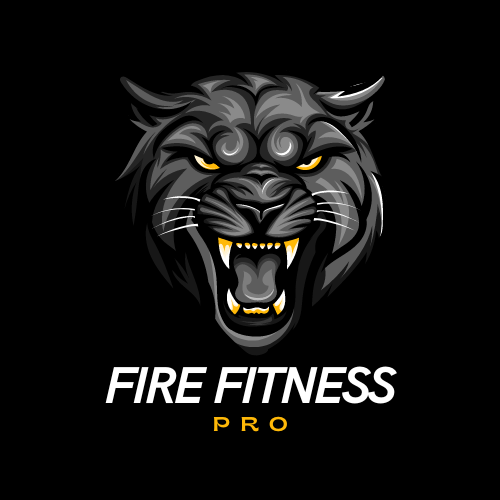High-Intensity Interval Training (HIIT) has quickly become a favorite among fitness enthusiasts seeking time-efficient and effective workouts. Designing the perfect HIIT routine involves understanding key principles and techniques to ensure that you optimize your workout for your fitness level and goals. In this comprehensive guide, we’ll explore how you can create a unique HIIT experience tailored just for you, incorporating cardio and strength exercises, customizing durations, and maintaining proper form to maximize results and prevent injury.
Design Your Own HIIT Workout Adventure with This Perfect Formula
To design the perfect HIIT (High-Intensity Interval Training) routine that suits your personal fitness level and goals, start by selecting exercises that target various muscle groups and ensure a balanced workout. Begin with a solid warm-up to prepare your body and reduce the risk of injury. Incorporate a mix of cardio and strength exercises such as jumping jacks, burpees, push-ups, and squats to keep your heart rate high and challenge different parts of your body. Aim for intervals that maximize intensity, like 20 seconds of all-out effort followed by 10 seconds of rest, known as the Tabata method. Adjust the duration and rest periods based on your fitness level, gradually increasing intensity as your stamina improves. Always cool down and stretch post-workout to aid recovery. By combining versatility and structure, you can create an engaging and effective HIIT routine. Remember to listen to your body and modify exercises if needed, ensuring a workout that’s both challenging and enjoyable.
Understand the Core Principles of High-Intensity Interval Training (HIIT)
High-Intensity Interval Training, or HIIT, is a workout strategy that alternates between intense bursts of activity and fixed periods of less-intense activity or rest. Understanding the core principles of HIIT allows you to tailor workouts effectively to match your fitness level. The intensity can help with burning calories faster, improving cardiovascular endurance, and building strength across various muscle groups.
HIIT workouts rely on pushing the heart rate up during high-intensity intervals, which can range from running, cycling, or bodyweight exercises, and bringing it down during short recovery periods. It’s crucial to select a heart-pumping mix of exercises that not only challenge your body but also feel enjoyable. By keeping sessions short yet intense, HIIT provides an efficient way to achieve fitness gains without spending hours at the gym.
– Incorporate heart-pumping exercises like burpees, jump squats, and sprints.
– Include short intervals of jogging or brisk walking for active recovery.
– Use intervals of 20 to 45 seconds of work followed by 10 to 30 seconds of rest.
Combine a Mix of Cardio and Strength Exercises
| Exercise Type | Focus Area | Benefits | Example Exercises |
|---|---|---|---|
| Cardio | Cardiovascular endurance | Increases heart rate, improves stamina | Jumping jacks, sprints, high knees, mountain climbers |
| Strength | Muscle building, toning | Builds lean muscle mass, boosts metabolism | Push-ups, squats, lunges, dumbbell presses |
| Core | Core strength and stability | Enhances posture, balance, and endurance | Planks, Russian twists, bicycle crunches |
| Full-body | Total body workout | Engages multiple muscle groups simultaneously | Burpees, jump squats, medicine ball slams |
A balanced and dynamic HIIT routine shouldn’t only focus on cardiovascular fitness but also include strength exercises to engage all muscle groups. Combining these two elements ensures a thorough workout that enhances endurance and muscle toning. This approach not only helps in calorie burning but also builds a muscular physique.
Incorporating both cardio and strength within the same session fosters comprehensive fitness development by challenging different muscle fibers and energy systems. For instance, you could perform a series of jump squats to boost heart rate followed by a set of push-ups to target upper body strength. This mix prevents boredom and ensures that the body is challenged in versatile ways, encouraging muscle adaptation and growth.
– Use dumbbells for added resistance in exercises like lunges or shoulder presses.
– Incorporate bodyweight exercises such as plank variations or mountain climbers.
– Alternate between lower-body cardio and upper-body strength moves for balance.
Customize the Duration and Intensity of Intervals
| Fitness Level | Work Interval (seconds) | Rest Interval (seconds) | Work-to-Rest Ratio | Recommended Exercises |
|---|---|---|---|---|
| Beginner | 20 | 40 | 1:2 | Bodyweight squats, walking lunges, jumping jacks |
| Intermediate | 30 | 30 | 1:1 | Burpees, mountain climbers, push-ups |
| Advanced | 40 | 20 | 2:1 | Box jumps, sprinting, kettlebell swings |
Designing the perfect HIIT routine involves tailoring the duration and intensity of your intervals based on your personal fitness goals and experience level. Customization allows you to progress at your own pace while mitigating risks of injury or burnout. The right balance is essential to maximizing calorie burn while still maintaining enough energy to complete the entire workout.
Beginners might start with shorter work intervals, gradually increasing as they fine-tune their form and stamina. Advanced practitioners can experiment by incorporating longer or more intense work periods. Adjusting your work-to-rest ratios is a crucial element of personalization, enabling you to maintain progress and continuously challenge yourself as your fitness improves.
– Beginners can benefit from a 2:1 rest ratio – 20 seconds of exercise followed by 40 seconds rest.
– Intermediate levels might try 1:1 ratios – 30 seconds work and 30 seconds rest.
– Advanced enthusiasts can push for 2:1 work-to-rest ratios with 40 seconds exercise and 20 seconds rest.
Incorporate Variety into Your Sessions
| Goal | Work Interval (seconds) | Rest Interval (seconds) | Example Exercises |
|---|---|---|---|
| Weight Loss | 30 | 30 | Burpees, jump rope, high knees |
| Muscle Endurance | 45 | 15 | Squats, push-ups, plank jacks |
| Strength & Power | 40 | 20 | Kettlebell swings, deadlifts, box jumps |
| Cardiovascular Health | 30 | 60 | Running, cycling, jumping jacks |
Keeping workouts engaging and effective is vital for long-term commitment. Incorporating variety into your HIIT sessions will make them feel more like an adventurous journey than a monotonous chore. Varied exercises and interval configurations help to surprise your muscles, which can lead to improved fitness results.
Switching up exercises and interval patterns keeps your mind and body guessing, preventing adaptation and plateaus. You might include a week of primarily bodyweight exercises followed by a week where equipment like kettlebells or resistance bands are central. Such change-ups also allow for a mini-reset and refreshment of your goals with each new configuration.
– Rotate through exercises like kettlebell swings, box jumps, or agility drills.
– Mix up your patterns, such as Tabata-style workouts or pyramid intervals.
– Combine different movement planes—forward lunges, side shuffles—to target muscles diversely.
Focus on Proper Form and Recovery Between Intervals

Proper form and adequate recovery during exercise sessions not only ensure you maximize the benefits of your HIIT adventure but also prevent injuries. Adhering to correct techniques improves the efficiency of the movements, enabling the exertion of optimal muscle strength and endurance.
Recovery is an integral part of HIIT, allowing the body to recuperate and ready itself for the next bout of high-intensity work. Emphasizing recovery through proper breathing techniques or active recovery moves like stretches can enhance the long-term efficacy and sustainability of your workout routine.
– Use foam rolling or stretching techniques during rest periods for active recovery.
– Focus on core engagement and breath control to stabilize throughout exercises.
– Incorporate cooldown activities such as light yoga or walking post-session.
HIIT Workout: What You Need to Make It Work
To maximize efficiency and impact of a HIIT workout on your fitness goals, it’s imperative to grasp its basic principles. The high-intensity nature of these workouts leads to increased heart rates, boosting cardiovascular fitness and promoting calorie consumption in a shorter period than traditional workouts. The alternating periods of work and rest should be tailored to optimize the balance between effort and recovery.
These foundational principles ensure that HIIT workouts are effective regardless of individual fitness levels. Beginners can start with simpler exercises and longer rest intervals, while advanced athletes can challenge themselves with complex movements and shorter recovery. Tailoring the exercise and rest periods allows everyone to harness the benefits of HIIT while mitigating risk.
– Use exercises that you can easily modify, such as switching from jump squats to regular squats.
– Adjust resting times to your comfort level and gradually reduce them as stamina increases.
– Incorporate exercises that align with personal fitness goals, whether they focus on strength, endurance, or mobility.
Choose Exercises That Target Different Muscle Groups
| Exercise | Target Muscle Group | Key Benefit | Variation |
|---|---|---|---|
| Burpees | Full-body (cardio + strength) | Boosts cardiovascular fitness and muscle endurance | Can modify to low-impact or add a jump |
| Push-ups | Upper body (chest, triceps) | Builds upper body strength and stability | Knee push-ups for beginners |
| Jump Squats | Lower body (quads, glutes) | Enhances leg strength and power | Bodyweight or weighted for added intensity |
| Mountain Climbers | Core, shoulders, legs | Improves core strength and agility | Perform slowly for a strength focus |
| Planks | Core, back, shoulders | Builds core stability and endurance | Side planks or plank variations |
A crucial component of crafting a HIIT workout is selecting exercises that comprehensively target different muscle groups, ensuring balanced development and injury prevention. This approach not only builds strength across various muscles but also enhances metabolic rate, improving overall fitness levels.
Engaging multiple muscle groups within one routine ensures efficient calorie burning and muscular engagement. You might alternate between exercises that focus on the lower body, like squats, and those that target the upper body, such as push-ups or rows. This balance ensures that your body receives comprehensive conditioning, strengthening weaknesses and capitalizing on strengths.
– For full-body workouts incorporate moves like burpees, plank jacks, or medicine ball slams.
– For more focused sessions, choose exercises like tricep dips (upper body) or lunges (lower body).
– Regularly assess muscle imbalances to target underdeveloped groups in future sessions.
Determine the Appropriate Work-to-Rest Ratio

Choosing the right work-to-rest ratio is pivotal for tailoring your HIIT routine, as it influences your workout’s intensity and recovery, and should align with your fitness goals. In determining the best balance, you consider factors like your current physical fitness level and specific objectives, like improved endurance or strength.
Beginners often benefit from longer rest intervals, which allow the body adequate time to recuperate, whereas more seasoned athletes may reduce rest periods to maximize metabolic burn. Gradually adjusting these ratios can help improve cardiovascular capacity and muscular endurance over time, ensuring continual progress and challenge.
– Start with a 1:2 ratio, such as 30 seconds work and a full minute of rest for beginners.
– Intermediate/advanced levels might use a 1:1 ratio: 45 seconds on, 45 seconds off.
– Aim for high-intensity bursts with shorter recovery for an added challenge, like 1:0.5 ratios.
Incorporate a Proper Warm-up and Cool-down Phase
To enhance performance, aid in recovery, and prevent injury during your HIIT sessions, it’s crucial to incorporate proper warm-up and cool-down phases. A dynamic warm-up prepares muscles and increases heart rate, ensuring the body is primed for the intensity to follow.
Likewise, a comprehensive cool-down facilitates gradual recovery, helping to lower heart rate and improve flexibility via stretching. This approach can limit muscle soreness and aid in overall recovery, ensuring that your body is always ready for the next session without undue strain or risk.
– Implement dynamic stretches such as arm circles or leg swings during warm-ups.
– Use brisk walking or light jogging as initial warm-up activities to elevate heart rate.
– Focus on static stretches in cooldowns, targeting key muscle groups worked in the session.
Continuously Track Progress and Adjust
To maintain progress and stay engaged with your HIIT workouts, it’s essential to continuously track your fitness journey. Whether by using fitness apps or traditional journaling, keeping a record of performance can provide insights into patterns, strengths, and areas needing improvement.
Adjusting workout intensity, duration, or the variety of exercises based on this tracking data enables you to consistently challenge your body, avoiding plateaus. This reflective practice not only enhances motivation but also provides tangible markers of success that encourage commitment to your fitness journey.
– Leverage fitness devices to monitor heart rate and calorie burn.
– Set milestone achievements to guide progression.
– Record personal bests in exercise completion times or repetitions.
Choose Your Own HIIT Workout Adventure

Designing your own HIIT workout offers amazing flexibility and personalization that enables you to tailor sessions to your specific fitness level and desired goals. This empowers you to decide the focus areas, whether that’s more on endurance, strength, or an even mix of both.
The ability to customize your routine ensures that it remains relevant and effective, keeping you engaged over the long term. Whether you’re a beginner figuring out your first collection of workouts or someone seasoned looking to mix things up, personalizing your regimen can cater to your unique physiological responses and lifestyle requirements.
– Choose exercises that complement your interests, like dance-inspired moves if you love music.
– Schedule workouts during your peak energy times for optimal performance.
– Adapt intensity levels based on personal mood, energy, or day-to-day health assessments.
Discover How to Select from a Variety of Exercises
Selecting the right exercises is essential for creating an engaging and effective HIIT routine. This decision involves considering activities that target multiple muscle groups to ensure balance and a whole-body workout. Choosing exercises that align with personal preferences helps in maintaining consistency.
The variety of exercises covered in HIIT routines also creates a dynamic workout environment that continually challenges your physical capabilities. By having a diverse range of exercises in your arsenal, from compound to isolation movements, you can program routines that are both fun and functionally effective.
– Rotate between exercises like jumping jacks, kettlebell swings, or battle rope alternations.
– Ensure exercise selection fits available equipment or is accessorized with resistance bands for versatility.
– Prioritize exercises that yield the best results for your body’s needs and abilities.
Learn the Importance of Mixing High-intensity and Rest Intervals
Understanding how to effectively mix high-intensity and rest intervals is key to optimizing calorie burn and improving cardiovascular health through HIIT workouts. Using the correct balance between action and recovery periods can accelerate results and improve overall fitness levels.
The strategic alternation between these intervals trains your body’s energy systems to become more efficient, thereby boosting metabolism and endurance. Gradually increasing the intensity of these active phases while managing adequate recovery keeps workouts stimulating and your fitness journey progressively challenging.
– Experiment with pyramid training to increase work periods gradually during a session.
– Use variable rest periods to adjust session challenges based on results recorded.
– Incorporate rhythmic breathing exercises during rest for mental focus and energy conservation.
Gain Insights on Incorporating Equipment or Bodyweight Exercises
| Equipment Type | Advantages | Challenges | Example Exercises |
|---|---|---|---|
| Bodyweight | Convenient, no equipment needed, increases mobility | Can be limited for strength gains | Push-ups, planks, burpees, squats, mountain climbers |
| Kettlebells | Adds resistance, builds strength quickly | Requires access to equipment, can be intimidating | Kettlebell swings, goblet squats, kettlebell presses |
| Resistance Bands | Portable, targets muscles differently, low-impact | Limited resistance compared to weights | Lateral leg raises, bicep curls, resistance band squats |
| Dumbbells | Enhances muscle building, versatile | Requires space and equipment | Dumbbell lunges, overhead press, dumbbell rows |
Whether you have access to a fully-equipped gym or prefer working out from home, incorporating equipment or sticking to bodyweight exercises can define your HIIT routine. Both options present unique benefits and challenges, offering comprehensive paths to desired fitness outcomes.
Incorporating equipment like dumbbells, resistance bands, or kettlebells ensures you can add resistance and variety to your workouts, intensifying muscle engagement. On the other hand, bodyweight exercises are easily adaptable and excellent for developing strength, flexibility, and balance without the need for additional tools.
– Use kettlebells for added resistance in squats, presses, or swings.
– Integrate resistance bands for exercises like banded leg lifts or lateral walks.
– Stick to bodyweight exercises for convenience and mobility workouts.
Understand the Benefits of Regularly Adjusting Your HIIT Routine
Regularly adjusting your HIIT routine is crucial to avoid plateaus and maintain excitement in your fitness journey. By tweaking variables like interval intensity, exercise selection, and session duration, you stimulate continuous improvement and avoid stagnation.
These adjustments can refresh your commitment, provide novel challenges, and foster ongoing adaptation across different muscle groups and energy systems. Whether increasing reps, modifying exercises, or increasing workout frequency, these changes ensure that each session remains a step forward towards your personalized fitness goals.
– Adapt routines monthly to introduce new exercises and prevent routine fatigue.
– Increase difficulty progressively through added resistance or faster tempos.
– Encourage creativity by including unique combinations and hybrids of exercises.
A Few Tips on How to Design Your Own HIIT Workout
Customize Exercises to Match Your Fitness Level and Goals
Creating a HIIT routine is best approached with a clear understanding of your current fitness level and goals. This allows for the conscious selection of exercises and intensities that cater to personal capabilities and aspirations. Ensuring that your workout is personalized can lead to greater enjoyment, motivation, and consistent improvement.
Consider both your short-term and long-term objectives when crafting your routine, making sure to align exercises with these aims. Whether pursuing weight loss, muscle toning, or enhanced cardiovascular capacity, every workout choice should reflect and support these ambitions.
– Opt for low-impact exercises if new to HIIT or recovering from injuries.
– Ensure chosen exercises simulate movements from everyday activities for realism and practicality.
– Establish intervals that challenge but don’t overwhelm your current fitness thresholds.
Incorporate a Balanced Mix of Cardio, Strength, and Flexibility Exercises

When planning an effective fitness regimen, it’s essential to strike a balance between different types of exercises to achieve optimum health and performance. By incorporating a mix of cardio, strength, and flexibility exercises, you can create a well-rounded workout routine that supports diverse fitness goals and contributes to overall well-being.
Cardio: Boosting Heart Health and Endurance
Cardio exercises are vital for enhancing cardiovascular health, increasing stamina, and aiding in weight management. Activities like running, swimming, cycling, and even brisk walking elevate your heart rate, improve lung capacity, and burn calories. Implementing cardio sessions into your weekly routine can lead to a healthier heart, reduced risk of chronic diseases, and enhanced mood due to the release of endorphins. Aim for at least 150 minutes of moderate aerobic activities or 75 minutes of vigorous activities per week as recommended by health experts for sustained benefits.
Strength Training: Building Muscle and Enhancing Metabolism
Strength or resistance training focuses on developing muscle mass and strength through exercises such as weight lifting, bodyweight workouts, or resistance band exercises. Regular strength training not only sculpts and defines your muscles but also significantly boosts your metabolic rate, helping you burn more calories even at rest. It strengthens bones, improving bone density and reducing the risk of osteoporosis. Incorporate strength workouts two to three times a week, targeting different muscle groups for balanced development and muscle recovery.
Flexibility: Promoting Mobility and Injury Prevention
Flexibility exercises enhance the range of motion of your joints and muscles, reducing stiffness and improving posture and coordination. Practices such as yoga, Pilates, or stretching routines are effective for increasing flexibility. Prioritizing flexibility exercises helps prevent injuries by preparing muscles and joints for the physical demands of more intense workouts. Additionally, these exercises can provide a meditative component that aids in stress reduction, relaxation, and overall mental well-being. Incorporate flexibility sessions into your routine several times a week for optimal results.
Creating a Cohesive Routine
A balanced fitness program doesn’t have to be overwhelming or time-consuming. Here are a few tips on how to create a cohesive routine:
1. Schedule your workouts: Plan your week in advance, dedicating specific days for cardio, strength, and flexibility exercises. You might focus on cardio two to three days, strength on alternate days, and integrate flexibility exercises after each session or on rest days.
2. Mix and match: Combine different types of workouts in the same session, such as a yoga class that incorporates strength elements or a cardio workout with integrated bursts of bodyweight exercises for added resistance.
3. Listen to your body: While consistency is critical, it’s also essential to listen to your body’s signals. Rest when needed and adjust the intensity to match your fitness level and goals. 4. Seek professional guidance: If you’re new to exercise or unsure how to balance the three components, consider consulting a fitness professional. They can help you tailor your High-Intensity Interval Training (HIIT) routine to suit your individual needs and goals. A fitness expert can assess your current fitness level, recommend appropriate exercises, and provide personalized modifications to maximize your results while minimizing the risk of injury. Additionally, they can guide you in integrating HIIT with other workout forms to ensure a well-rounded fitness regimen. When searching for a personal trainer or fitness coach, look for someone with relevant certifications and experience in HIIT training. This professional insight will not only enhance the effectiveness of your workouts but also ensure that you maintain motivation and progress over time. With qualified guidance, you’re more likely to achieve your fitness goals efficiently, keeping your HIIT routine both challenging and rewarding.













